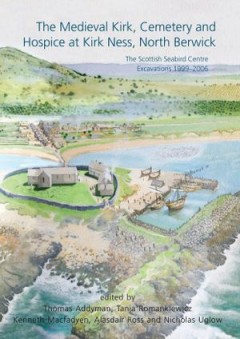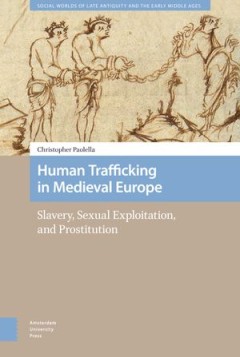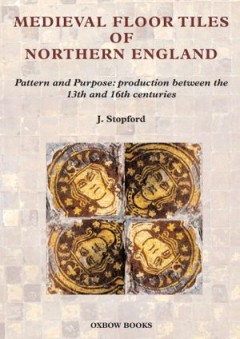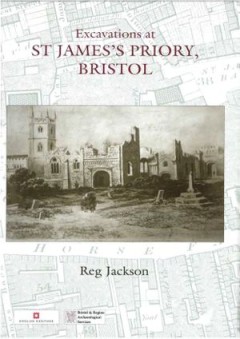Filter by

The Juggler of Notre Dame and the Medievalizing of Modernity: Volume 3 The A…
This ambitious and vivid study in six volumes explores the journey of a single, electrifying story, from its first incarnation in a medieval French poem through its prolific rebirth in the nineteenth and twentieth centuries. The Juggler of Notre Dame tells how an entertainer abandons the world to join a monastery, but is suspected of blasphemy after dancing his devotion before a statue of the M…
- Edition
- -
- ISBN/ISSN
- 9781783745234
- Collation
- -
- Series Title
- -
- Call Number
- -

The Juggler of Notre Dame and the Medievalizing of Modernity: Volume 2 Medie…
"This ambitious and vivid study in six volumes explores the journey of a single, electrifying story, from its first incarnation in a medieval French poem through its prolific rebirth in the nineteenth and twentieth centuries. The Juggler of Notre Dame tells how an entertainer abandons the world to join a monastery, but is suspected of blasphemy after dancing his devotion before a statue of the …
- Edition
- -
- ISBN/ISSN
- 9781783745081
- Collation
- -
- Series Title
- -
- Call Number
- -

The Juggler of Notre Dame and the Medievalizing of Modernity: Volume 1 The M…
"This ambitious and vivid study in six volumes explores the journey of a single, electrifying story, from its first incarnation in a medieval French poem through its prolific rebirth in the nineteenth and twentieth centuries. The Juggler of Notre Dame tells how an entertainer abandons the world to join a monastery, but is suspected of blasphemy after dancing his devotion before a statue of the …
- Edition
- -
- ISBN/ISSN
- 9781783744350
- Collation
- -
- Series Title
- -
- Call Number
- -

The Medieval Kirk, Cemetery and Hospice at Kirk Ness, North Berwick
Between 1999-2006 Addyman Archaeology carried out extensive archaeological excavations on the peninsular site of Kirk Ness, North Berwick, during the building, landscaping and extension of the Scottish Seabird Centre. This book presents the results of these works but its scope is much broader. Against the background of important new discoveries made at the site it brings together and re-examine…
- Edition
- -
- ISBN/ISSN
- 9780000000906
- Collation
- -
- Series Title
- -
- Call Number
- -

Human Trafficking in Medieval Europe Slavery, Sexual Exploitation, and Prost…
Human trafficking has become a global concern over the last twenty years, but its violence has terrorized and traumatized its victims and survivors for millennia. This study examines the deep history of human trafficking from Late Antiquity to the Early Modern Period. It traces the evolution of trafficking patterns: the growth and decline of trafficking routes, the everchanging relationships be…
- Edition
- -
- ISBN/ISSN
- 9789463723336
- Collation
- -
- Series Title
- -
- Call Number
- -

West Cotton, Raunds A Study of Medieval Settlement Dynamics AD 450-1450. Exc…
The open area excavation of nearly a half of the small deserted medieval hamlet of West Cotton, Raunds, Northamptonshire has revealed the dynamic processes of constant development in a way that has rarely been achieved on other comparable sites in England. Its origins have been seen to lie in the mid tenth-century plantation of a planned settlement based on regular one-acre plots, which occurre…
- Edition
- -
- ISBN/ISSN
- 9781842177587
- Collation
- -
- Series Title
- -
- Call Number
- -

Medieval Floor Tiles of Northern England Pattern and purpose: production bet…
This study of the design, manufacture and use of medieval floor tiles shows the long-lasting influence achieved in the north of England, especially by the Cistercian monasteries. It serves to demonstrate how these monastic houses made use of the resources and contacts available to them. The study focuses on one of the richest medieval floor tile assemblages in the world, with material from 118 …
- Edition
- -
- ISBN/ISSN
- -
- Collation
- -
- Series Title
- -
- Call Number
- -

Life and Economy at Early Medieval Flixborough, c. AD 600-1000 The Artefact …
Between 1989 and 1991, excavations in the parish of Flixborough, North Lincolnshire, unearthed remains of an Anglo-Saxon settlement associated with one of the largest collections of artefacts and animal bones yet found on such a site. In an unprecedented occupation sequence from an Anglo-Saxon rural settlement, six main periods of occupation have been identified, dating from the seventh to the …
- Edition
- -
- ISBN/ISSN
- 9781842173107
- Collation
- -
- Series Title
- -
- Call Number
- -

Farmers, Monks and Aristocrats The environmental archaeology of Anglo-Saxon …
The environmental archaeological evidence from the site of Flixborough (in particular the animal bone assemblage) provides a series of unique insights into Anglo-Saxon life in England during the 8th to 10th centuries. The research reveals detailed evidence for the local and regional environment, many aspects of the local and regional agricultural economy, changing resource exploitation strategi…
- Edition
- -
- ISBN/ISSN
- 9781782974864
- Collation
- -
- Series Title
- -
- Call Number
- -

Excavations at St James's Priory, Bristol
The Benedictine Priory of St James was established just outside the medieval city of Bristol in 1129AD. Two areas were excavated: Site 1 to the east of the Priory church, and Site 2 to the west. The Priory was largely destroyed during the Dissolution of 1540, but the area around Site 1 remained in use during the 17th and 18th centuries as housing was built there. Site 2 was in use from the late…
- Edition
- -
- ISBN/ISSN
- 9781789254419
- Collation
- -
- Series Title
- -
- Call Number
- -
 Computer Science, Information & General Works
Computer Science, Information & General Works  Philosophy & Psychology
Philosophy & Psychology  Religion
Religion  Social Sciences
Social Sciences  Language
Language  Pure Science
Pure Science  Applied Sciences
Applied Sciences  Art & Recreation
Art & Recreation  Literature
Literature  History & Geography
History & Geography